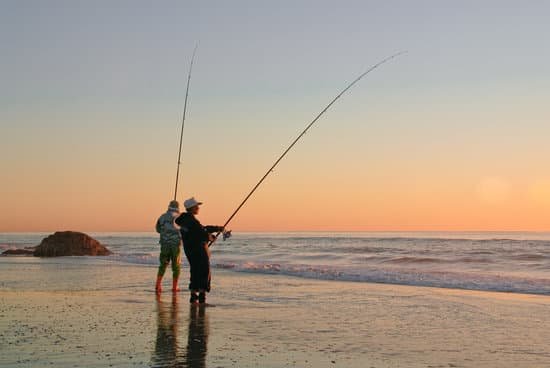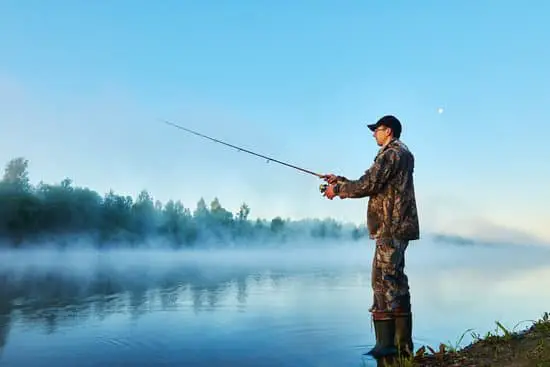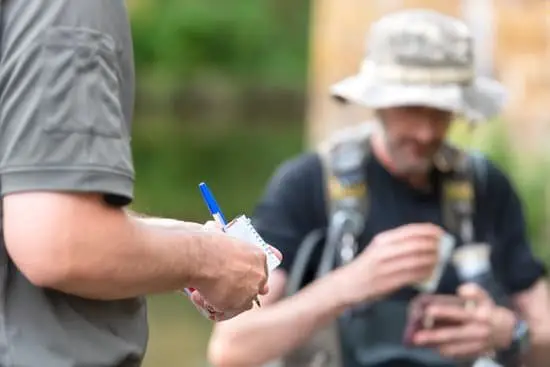They say that unless you’re not at the right place at the right time, you’ll end up missing the opportunity. The same can be said of fishing.
Fishing makes for a wonderful outdoor activity. The joy of waiting by the shore to skilfully navigate the waters and catch a fish is incomparable. However, that requires perfecting timing and planning. Poorly planned fishing outings result in no fish and a great wastage of time.
Such disappointing results often arise due to undue care with regard to planning how to fish. Fishing is heavily reliant on factors like water level, movement, depth, and direction. All of these factors cannot be controlled.
What does that mean for you, then? What are these factors, and how can you ensure that your fishing outing is a success? How do tides, temperature, and tools impact your fishing experience? Is it better to fish during a high tide or a low tide?
Whether you’re out for a vacation by the water to fish or your job is to seek fish for occupation. If not those, then maybe you’re an angler looking for ways to improve the fishing experience. All the answers you’re looking for are available in this article.
Is It Better to Fish at a High Tide or a Low Tide?
One of the key factors that will make or break your fishing outing is the tide at the time of fishing. The short answer is neither; you will find no fish in the water during either a high tide or a low tide. Instead, studies point towards fishing during a flooding or a falling tide.
Tides are just one of the factors that affect fishing. Temperature, water currents, lake, and weather patterns matter while fishing.
How Tides Affect Fishing
Tides are the movement along the coastline or the shore. They are periodic in nature; therefore, they can be predicted beforehand, which is what is taken into consideration while planning for a fishing outing.
Tides occur due to the forces of the sun and moon. They emerge from the ocean and then move to the coastlines. This is where they rise or fall, depending on the time of the day. Usually, there are two high tides and two low tides seen in a day.
This information is useful when fishing. Tidal movements impact the groups of fish and types of fish found in certain areas. Tides affect the food that fish feed on, and they also move those particles with the water currents they generate.
Fish and Movement Along with the Tides
It is known that the best way fish can be caught is when they are feeding. These currents move them around, and it is on that basis that the fish are displaced by the food. This movement thus changes the way we can catch fish.
If we do not take care of the timings of the tides, we will not be able to catch the kind of fish we want. It is a cycle: fish move with the tides due to food displacement; therefore, it may also change the time when you can fish.
Tides also have an effect on where you will find those fish. Sometimes the environment is not very equitable for them to dwell, which leads us to the next factor.
The temperature of the Water
Different schools of fish have different living environments, which depends on the water’s depth and temperature.
The depth of the water is an intricate detail when fishing: shallow water is the part that is heavily influenced by tides. Shallow water dictates the feeding spots of the fish, and the tidal movement will move that further in or retreat back.
Since water is shallow, it takes less time to change its temperature with the sun. On a particularly warm day, the shallow water heats up quickly, which means fish show more activity. On some days, fish activity is low.
Due to these reasons, fishing during warmer days is highly recommended. Shallow water is also an enabler of brightness from the sun, which sharpens the appearance of the water. Therefore, fish can often be found in these areas while inshore fishing.
Currents in Shallow Water
In localized fishing, currents play a critical role in deciding whether or not fish are available in that certain area. Fish often tend to move with the current, which means fishing along with the current is advisable.
These currents are often the resultants of falling and flooding tides. The falling tide pushes the fish deeper into the water, and the flooding tides bring fish up to the surface. These two factors are essential while considering the type of fishing.
Other Factors to Consider While Fishing
Location
Different schools of fish are found in different regions. Due to the movement in food that the tide brings, the location determines the place where fish can be found.
Fish also tend to have a behavioral cycle with regard to the food pattern. While many cling to the coast for food, many other fish are found deeper in the sea or ocean. This is what brings the variety in fishing, such as inshore and offshore fishing methods.
Phases of the Moon
Moon is a great contributor to the movement of tides. The gravitational field of the moon is greater than that of the sun because of its phases and its closeness to the earth.
The moon pulls the water, which leads to consistent rise and fall in the ocean or water bodies. The earth rotates along its axis, and the moon rotates around the earth every 12 hours. This is the reason why there are two high tides at 12 hours intervals along coastlines.
Places of Fishing
In addition to offshore and inshore fishing, fishing also takes place along the estuaries, channels, eddies, and whirlpools, etc. Fishing spots are the places where the concentration of fish is high. This can be due to the food or the general temperature.
It is helpful to keep an eye on that since fishing spots are usually repetitive. These elements decide the concentration of food. The local fisherman or the fishing guide will be able to report on the availability of the type of fish.
Weather
Fishing often depends on the weather seen on the day of fishing. Sunny days are usually recommended for fishing due to the warmth in the water that generally increases fishing activity. However, fish don’t like the brightness unless it is accompanied by heat.
That means that on cloudy days, the yield can be great. Although this is dependent on the amount of heat generated during the day, the cover from the clouds is enough for the fish to remain active.
On a cold day, especially before the onset of a storm, the fishing activity is sky-high. The drop in pressure creates a cold front, thereby a need for the fish to feed more. This opens a new, lucrative window for fishing.
Rainy days, surprisingly, yield good results because of the fish’s natural tendency to assume the raindrops as food. Furthermore, the rain breaks the surface of the water. It thus makes it difficult for the fish to identify what food is and where your rod is.
Turning the Tides to Your Advantage
Tides are a natural phenomenon that can be charted and used to your advantage. Understanding the tidal nature will be instrumental in obtaining a better yield. Studying the tides also helps you determine the kind of fishing technique to use in different circumstances.
The following tips are of great help when turning the tides to your advantage. Not only that, the following tips include general tips to improve the yield when fishing:
Tide Charts, Tables, and Information
Tide charts are incredible resources to pinpoint the time and the technique to catch fish at any time during the day. This is because these charts are made out of close examination and observation of the tides. They help in determining the water movement and food concentration, which help in catching fish.
Be it for vacationers fishing for an outing or people whose primary occupation is fishing, the charts help in the planning process. Due to their periodic nature, tides can be mapped, coupled, and compared to serve fishing spots or warnings in the water. They are usually prepared by the local water authority or the meteorological institutions of the country.
These tables and charts, while formatted differently from each other, provide adequate information in a straightforward manner. These charts specify the time and the supposed duration they would last, including the height and depth of the tides.
It is using this information that people keen on fishing can make their own guide and techniques to fish. Tide charts are often shown in real-time so including the historical data. You can use further information from there along with the real-time projection to decide.
Rule of Twelves
If there’s one thing that water is generally not, it is constant. Waters are often dynamic and everchanging, and tide charts plot them in real time. Those charts, however, only provide final technical data. That sometimes is a problem because the number at a said point in time is constant.
Rule of twelves is a handy technique that helps measure the in-betweens of the life of the tides. Such as the interim values with respect to how high the tide can go. That is what the rule of twelves calculates.
The charts tell you about the height of the tide at a certain hour. Using the rule of twelves, though, you will be able to determine what height, rise, or fall, there will be in the tides. The idea behind this rule of thumb is that tides change every six hours. It slowly increases from zero to maximum and then falling to zero or under at the sixth hour.
This helps in calculating the range of tides, which is beneficial to catch fish in the mid hours between the prime times, where charts affix the times and are straightforward, calculations using the rule of twelves aids in finding fish at most times than usual.
Falling and Flooding Tides
Falling and flooding tides are the spaces found between the high and low tides. They usually are the inbetweeners when fish activity is the highest. We know how fishing is not possible in high or low tides. The falling and flooding tides thus have the answers.
These tides are often the bait used to catch fish. The sheer variety found in this period of time is unmatched. These types of less intense tides are often referred to as the incoming, ongoing, and slack level of water. They are commonly associated with the average water level.
- Slack movement of water is the poorest time for fishing. Stagnant water offers no benefit in terms of the movement of food, which therefore means that fish are not actively seeking food.
- Incoming or flooding tides are the tides that are a result of water moving towards the land. It is usually considered the best tide to bring great fish bounty. The rising tide moves the water over the shallow parts of the coast, movement of which baits the fish. Other lures often work in this tide due to the eager fish following the bait of the water as well as yours.
- Outgoing or falling tides, while less desirable than flooding tides, are still great ebbing tides where a good yield can be made. This tide forms when the water is slowly retreating from the shore.
This tidal movement is not the one that fish generally pursue. Yet, there are times where the water sucks the insects, plants, and other food particles of fish food that fish are eager to chase. This is one short space of advantage for you to rope your rod or net in and catch a bounty.
Warnings and Other Key Points to Note
Flooding tides are by far the most lucrative spaces between tidal movements that fishing can be done productively. What comes after flooding tides is the high tide. So why is it not told that fishing can be done during the high tide?
High tides are often very intense in nature and have the ability to harm the person and the vessel from which they are fishing. High tide also brings more water with it to the shallow parts than flooding waters. Fish, while they do like dwelling in deep waters, are not accustomed to that level of force and high pressure.
Not only does it mean harm to both the fisherman and the fish, but it also means no fish to catch.
The same applies to stormy days. The best fish activity can be found during storms because of the severe ruckus and movement storms cause. Rains also contain other minerals and nutrients for the fish, which increases their activity.
That being said, storms are not the time for fishing due to the sheer amount of damage they cause to the person fishing. Fishing before the storm is advised than any other time. Much better are sunny or cloudy days when fish can be baited by the weather and temperature.
In Summary
Fishing is a joyous activity that can slowly become a hobby or even a means of living. However, there are ways to keep yourself safe and informed while fishing, which must be noted. Fishing during high or low tides is not beneficial. What is rather beneficial is the time between them that gives the best results.






